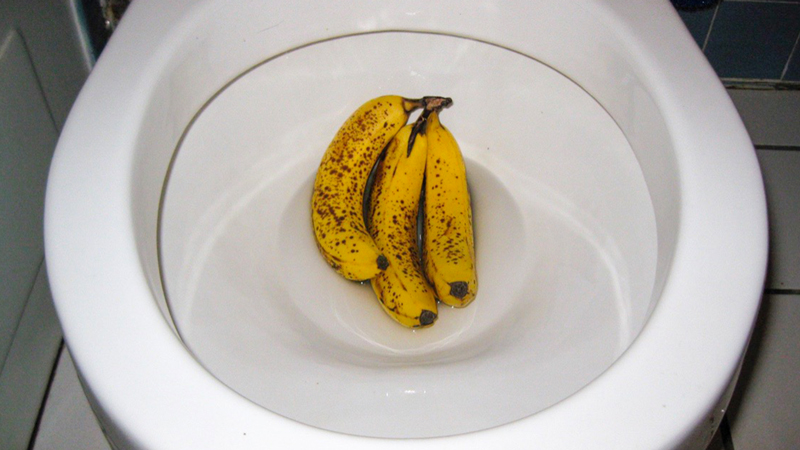Can You to Flush Food in the Toilet?
CallJust about everyone will have their private piece of advice when it comes to Flushing Food Down the Toilet?.

Introduction
Many people are usually confronted with the issue of what to do with food waste, especially when it concerns leftovers or scraps. One usual concern that occurs is whether it's okay to purge food down the toilet. In this write-up, we'll explore the reasons why individuals could think about flushing food, the repercussions of doing so, and different methods for correct disposal.
Reasons why people could think about flushing food
Lack of recognition
Some people might not be aware of the possible damage triggered by purging food down the bathroom. They may mistakenly think that it's a harmless method.
Comfort
Purging food down the toilet may seem like a quick and simple remedy to disposing of undesirable scraps, specifically when there's no neighboring trash can readily available.
Idleness
Sometimes, individuals may merely choose to flush food out of large laziness, without considering the repercussions of their actions.
Repercussions of flushing food down the commode
Environmental influence
Food waste that winds up in rivers can contribute to contamination and damage water ecosystems. Furthermore, the water used to flush food can stress water sources.
Pipes issues
Flushing food can lead to stopped up pipes and drains pipes, triggering pricey plumbing fixings and inconveniences.
Kinds of food that ought to not be purged
Fibrous foods
Foods with fibrous textures such as celery or corn husks can obtain tangled in pipes and create obstructions.
Starchy foods
Starchy foods like pasta and rice can absorb water and swell, leading to obstructions in pipes.
Oils and fats
Greasy foods like bacon or cooking oils need to never be flushed down the bathroom as they can strengthen and create obstructions.
Correct disposal methods for food waste
Utilizing a waste disposal unit
For homes geared up with waste disposal unit, food scraps can be ground up and purged via the pipes system. Nevertheless, not all foods are suitable for disposal in this manner.
Recycling
Particular food product packaging products can be recycled, minimizing waste and lessening ecological influence.
Composting
Composting is a green method to dispose of food waste. Organic materials can be composted and used to improve soil for horticulture.
The value of proper waste monitoring
Minimizing environmental injury
Proper waste administration practices, such as composting and recycling, assistance reduce air pollution and protect natural deposits for future generations.
Safeguarding plumbing systems
By preventing the technique of flushing food down the commode, house owners can prevent costly pipes repair work and preserve the integrity of their pipes systems.
Verdict
Finally, while it might be appealing to purge food down the commode for ease, it is essential to understand the potential repercussions of this activity. By taking on correct waste administration practices and disposing of food waste sensibly, individuals can contribute to healthier plumbing systems and a cleaner atmosphere for all.
FLUSH FOOD DOWN THE TOILET?
FLUSHING FOOD CAN CAUSE BLOCKED DRAINS IN YOUR HOME
All of the plumbing fixtures in your home are connected to the same sewer pipe outside of your home. This outdoor sewer pipe is responsible for transporting all the wastewater from your home to the Council sewer mains. Even small pieces of food that go down the kitchen sink can cause problems for your sewer. It should therefore be obvious that flushing larger bits of food, such as meat, risks a clog in either the toilet itself or the sewer pipes. Flushing greasy food is even more problematic because oil coagulates when it cools, coating the interior lining of your pipes.
THE TOILET IS NOT A BIN
Food isn’t the only thing that people shouldn’t be flushing down the toilet. People use the toilet to dispose of all kinds of things such as tampons, makeup wipes, dental floss, kitty litter and even underwear. Water goes to great lengths to educate residents about the high costs and stress placed on wastewater treatment systems simply from people flushing the wrong stuff down the toilet. It costs taxpayers millions of dollars each year, and homeowners thousands in blocked drain repairs.
FLUSHING FOOD IS A WASTE OF WATER
Flushing food is a waste of our most precious resource - water. In June this year Level 1 water restrictions were introduced to protect water supply from drought conditions. Much of New South Wales continues to be affected by prolonged drought with recent figures revealing up to 97 per cent of the state remains in drought. Depending on whether you have a single or dual flush toilet, every single flush uses between five and 11 litres of water. In the current climate this is a huge amount of water to be wasting on flushing food that should be placed in the bin (or better yet, the compost).
https://www.jabplumbingsolutions.com.au/blog/can-you-flush-food-down-the-toilet

Hopefully you enjoyed our part on Flushing Food Down the Toilet?. Many thanks for taking a few minutes to read our article post. Appreciated our content? Please share it. Let another person check it out. Thanks a bunch for being here. Revisit us soon.
Click Here